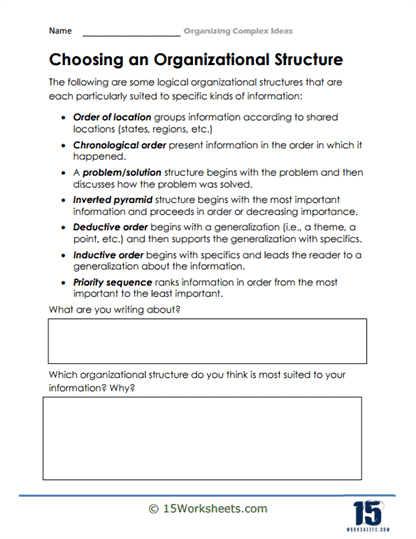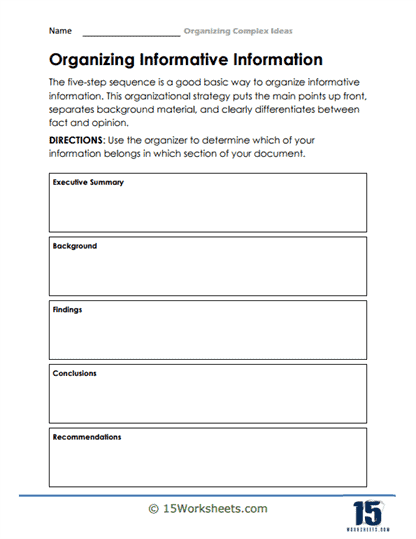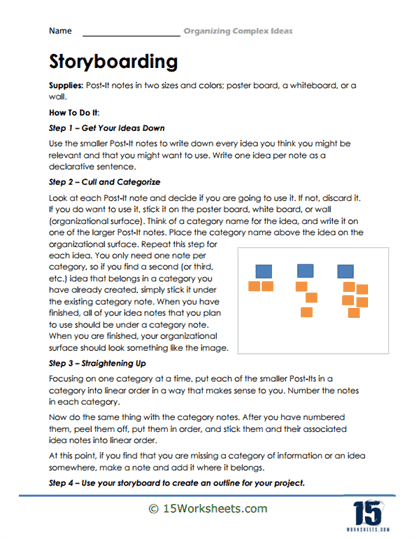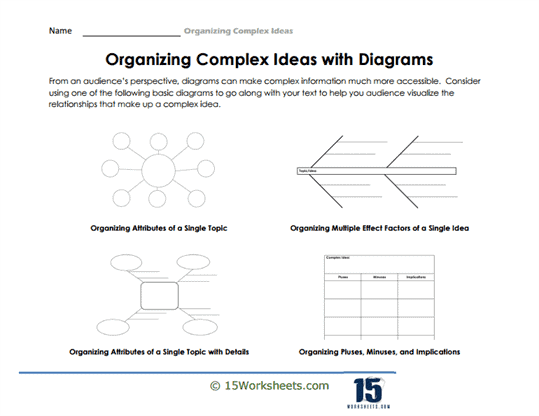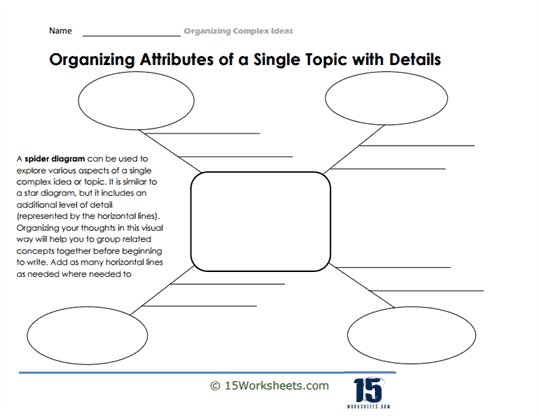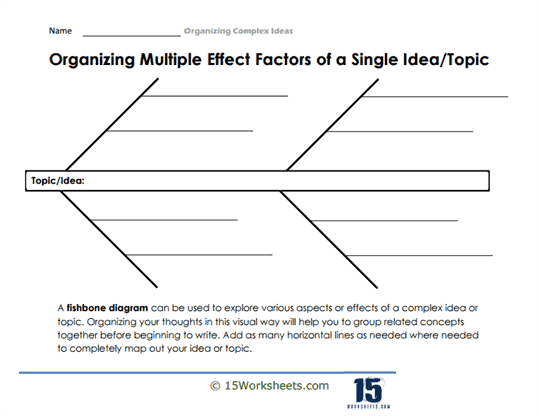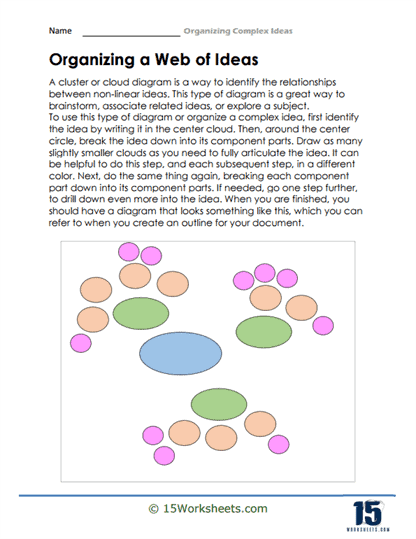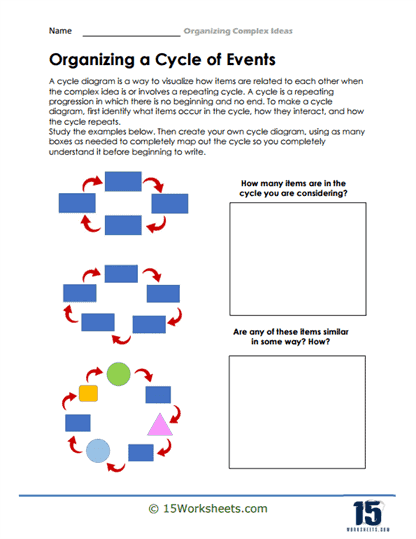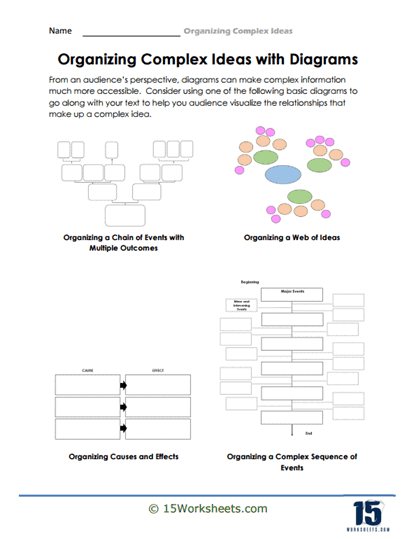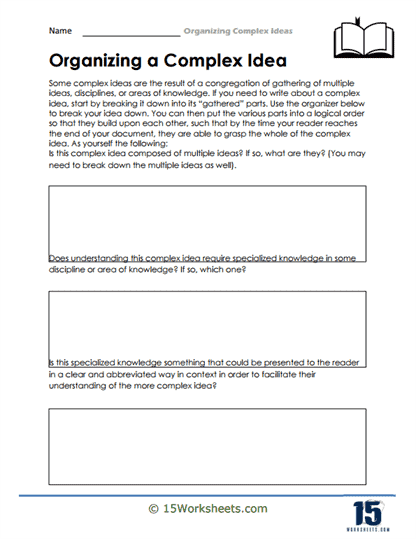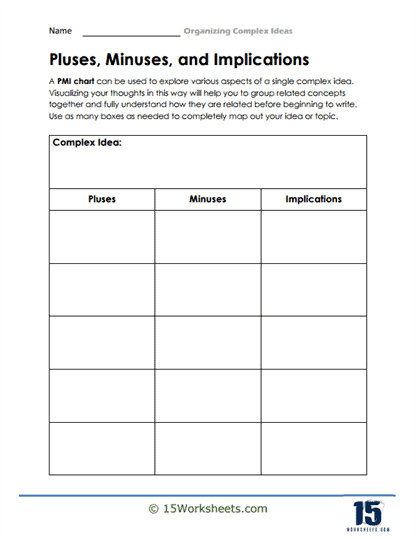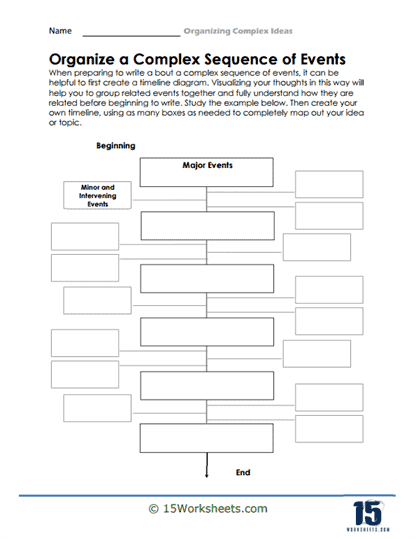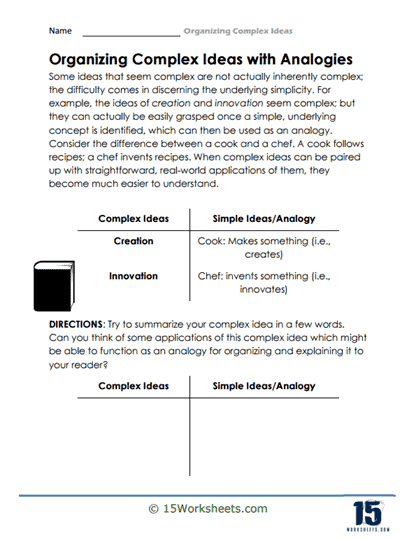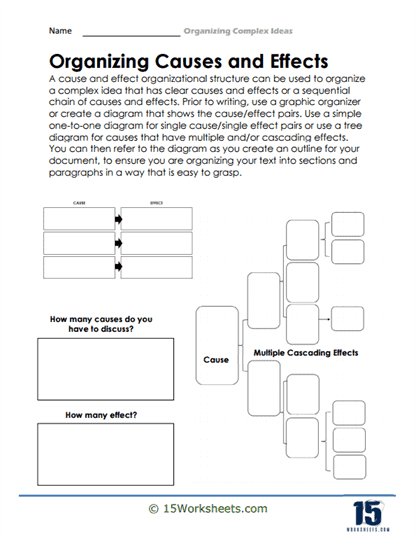Organizing Complex Ideas Worksheets
All About These 15 Worksheets
This series of 15 worksheets is a comprehensive and invaluable resource designed to help students develop essential skills in organizing and presenting complex ideas effectively. These worksheets provide students with practical tools and strategies to tackle intricate concepts, making their writing more coherent, logical, and impactful.
The exercises equip students with a step-by-step approach to organize their thoughts, structure their writing, and convey complex ideas with clarity. They are designed to nurture critical thinking, analytical skills, and the ability to present complex information in a reader-friendly manner. Through these worksheets, students will:
- Learn all about the different logical organizational structures;
- Organize informative information using a five-step sequence;
- Grasp the concept of storyboarding and use it to outline their project;
- Organize complex ideas, chain of events, and more using diagrams and other visual tools;
- Create their own PMI (Pluses, Minuses, Implications) Chart;
- Arrange ideas logically, establish a coherent flow, and maintain focus throughout their compositions;
- And evaluate their organization and structure, identify areas for improvement, and make necessary adjustments to enhance the clarity and coherence of their writing.
This series is suitable for students across different grade levels and can be used in various academic settings, including language arts classes, research projects, and essay writing assignments. By using these worksheets, teachers provide their students with essential tools to tackle complex ideas and communicate them effectively.
In summary, students develop skills that extend beyond writing. They learn to think critically, analyze information, and present their ideas in a well-structured and engaging manner. These worksheets empower students to tackle complex topics with confidence, ensuring that their writing reflects their deep understanding of the subject matter and captivates their readers with clarity and coherence.
How to Organize Complex Ideas
If you have ever had a million thoughts zooming in and out of your head, you know how frustrating and overwhelming it feels. Maybe you are trying to fix a problem at your workplace, but with so many complex ideas, you keep getting lost in your thoughts, or maybe someone is talking to you, but with so many ideas racing through your head, you are having a difficult time paying attention.
The good news is that there are ways to organize complex ideas that may not entirely make sense to you at the moment. These ways will give you a kick start so that you can think properly and plan your next big idea.
1. Visual Thinking
When you find that you have too many thoughts in your head, instead of stressing out, sit down, close your eyes, and think about what you need to accomplish. Go through ideas step-by-step in your head without overwhelming yourself. If you can’t picture yourself accomplishing a part of the project, ask yourself why.
Take time to think about your project and go through each of your ideas. When you think about the process, you will have saved yourself from physically starting something and halfway through realizing that there is something you don’t understand.
2. Mind Maps
If you feel like your brain will explode because of all the complex ideas in your head, you can benefit from mind maps. A mind map can help you put ideas down on paper so you can work through them methodically instead of tying yourself up inside your head.
The biggest trick when using a mind map is understanding and accepting that there is no concept of bad ideas. Put down everything you want on a piece of paper. You’d be surprised at the number of ideas you can write down. Once you have everything down on paper, it will become easier to sort through the ideas in your head.
3. Time Frame
We believe that the most essential and stressful part of a big project is meeting the deadline. Even though a calendar can be used to keep track of all the things that need to be accomplished within a tight time frame, a timeline can help you visualize some of the more complex ideas.
A time frame can help you build a straight line of things that need to be completed, along with an estimated time period needed for every step. If you find yourself falling behind, you can adjust the remaining part of your project without compromising on the final deadline.
4. Checklist
If you want to organize complex ideas, creating a checklist is one of the most important things you must do. When you make a checklist, you will be forced to write down the things that you need to accomplish. Checklists can also be used to organize your day-to-day thoughts so that you can complete a large project using smaller steps.
With a busy schedule, a checklist will ensure you do not forget or let anything slide. Moreover, you will feel super motivated and accomplished each time you can physically tick off the boxes of each task you complete. You can also use your phone if you do not want to use physical paper. Some programs will help you organize complex ideas inside your head that you can simply download on your phone, laptop, tablet, or computer.

